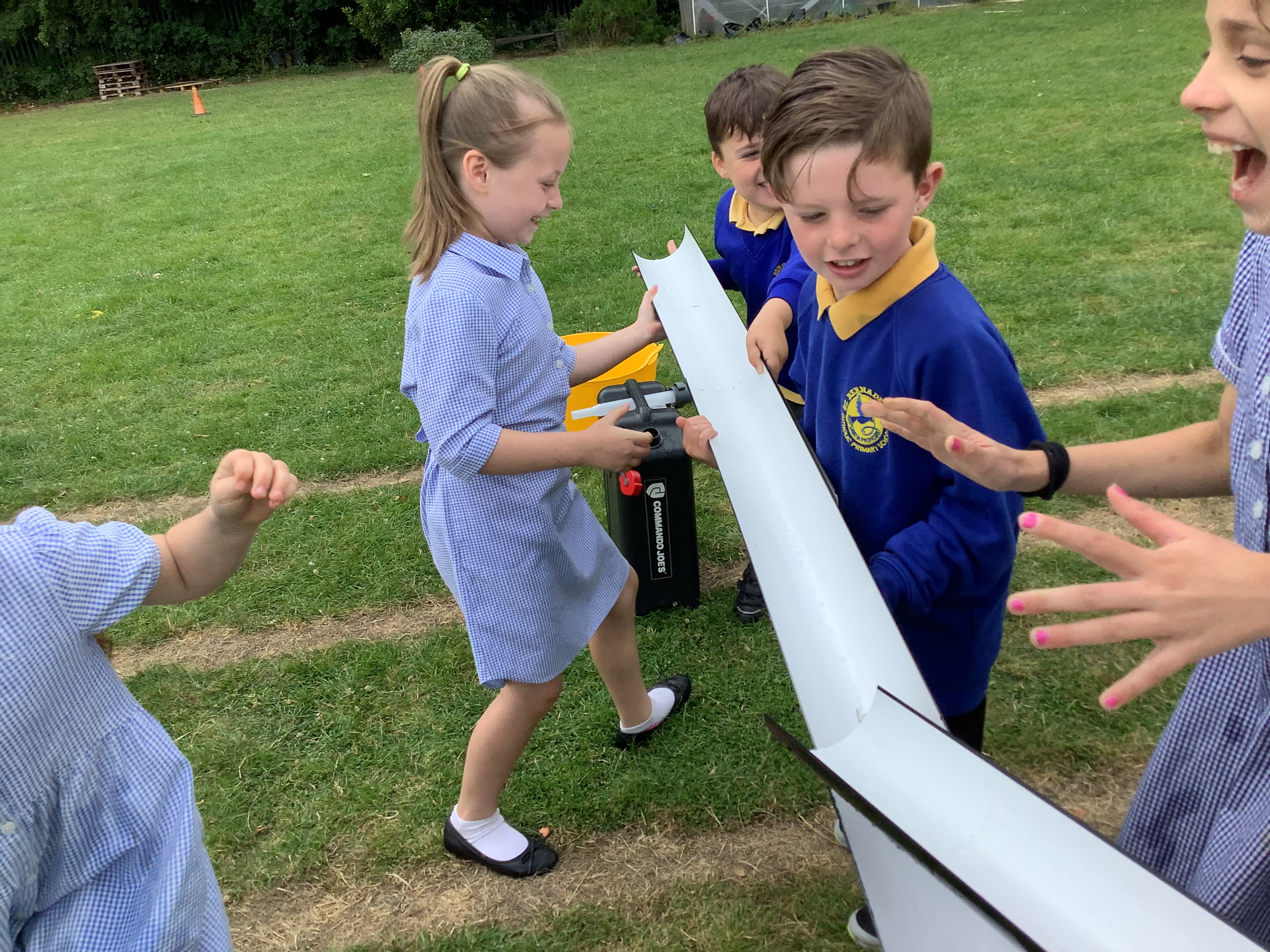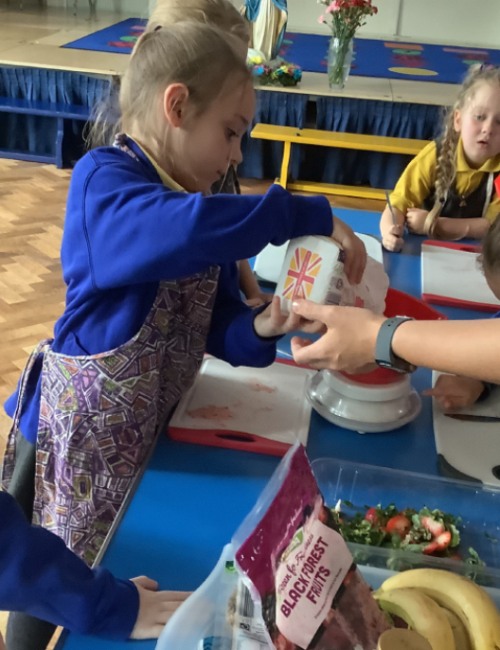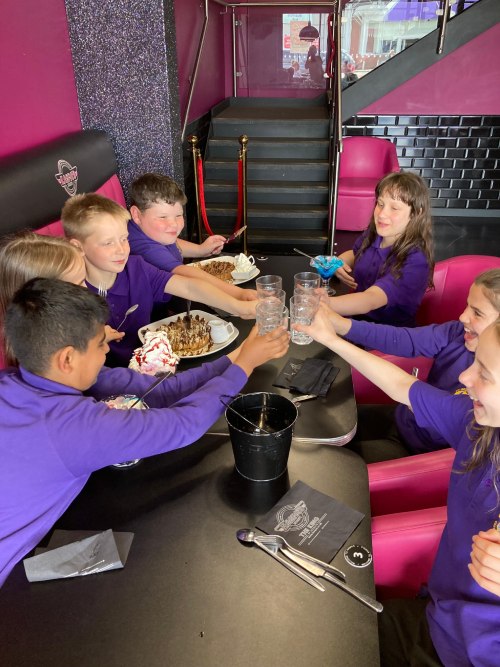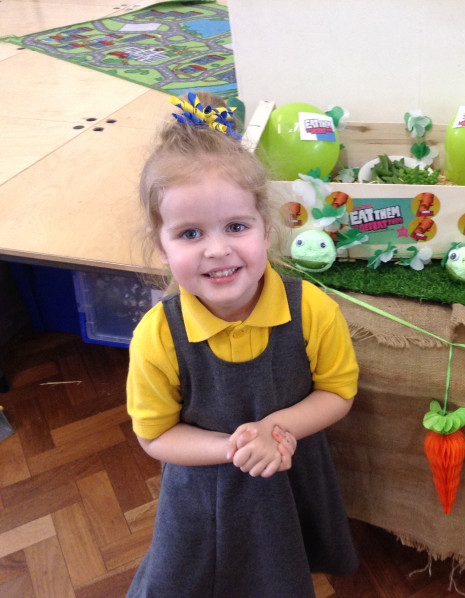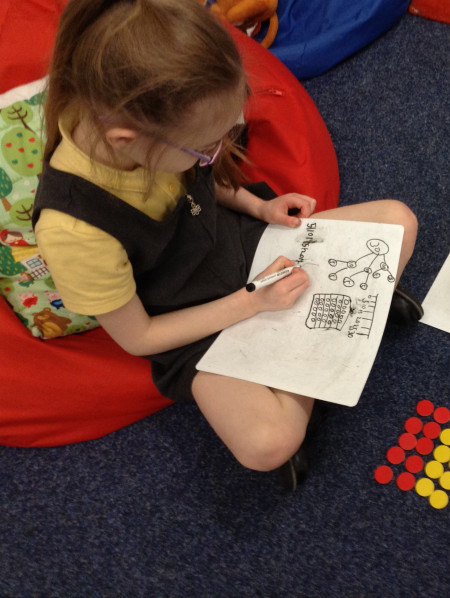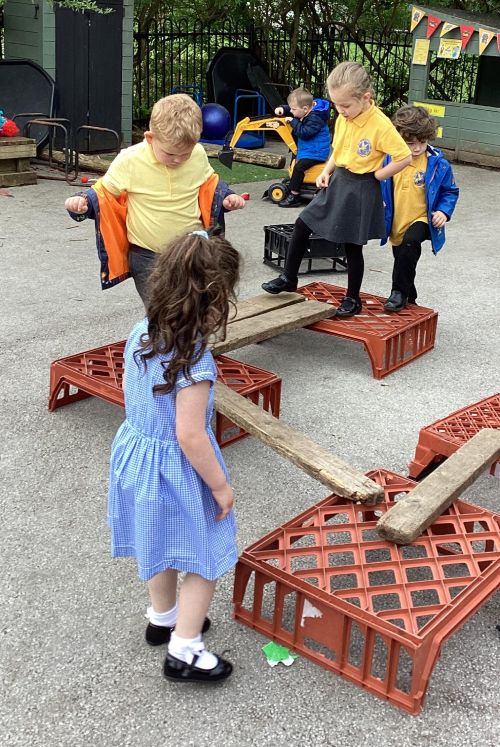Reading
The teaching of reading at St Bernadette’s complies entirely with the findings of current research and is compatible with DfE guidance on reading instruction.
St Bernadette’s teaches reading using one of the DfE validated Phonic schemes 'Supersonic Phonic Friends'. The scheme starts in FS1 and continues into Key stage 1 focussing on the higher levels of Phonics and spelling rules.
Children receive reading books matched to their current level in phonics. All phonetically decodable books are ordered in sets linked to our Phonics scheme.
In line with the National Curriculum, children still struggling to decode and spell, are taught to do this urgently through a rigorous and systematic phonics programme provided by the reading support teacher so that they catch up rapidly.
What is Synthetic Phonics?
Synthetic phonics is a method of teaching reading which first teaches the letter sounds and then builds up to blending these sounds together to achieve full pronunciation of whole words.
- Synthetic phonics teaches the phonemes (sounds) associated with the graphemes (letters) at the rate of about six sounds per week. The sounds are taught in isolation then blended together (i.e. synthesised), all-through-the-word. For example, children might be taught a short vowel sound (e.g. /a/) in addition to some consonant sounds (e.g. /s/, /t/, /p/). Then the children are taught words with these sounds (e.g. sat, pat, tap, at). They are taught to pronounce each phoneme in a word, then to blend the phonemes together to form the word (e.g. /s/ – /a/ – /t/; “sat”). Sounds are taught in all positions of the words, but the emphasis is on all-through-the-word segmenting and blending from week one.
- Synthetic phonics develops phonemic awareness along with the corresponding letter shapes.
- Synthetic phonics involves the children rehearsing the writing of letter shapes alongside learning the letter/s-sound correspondences preferably with the tripod pencil grip. Dictation is a frequent teaching technique from letter level to word spelling, including nonsense words (e.g. choy and feep) and eventually extending to text level.
- Synthetic phonics teachers put accuracy before speed. Fluency (i.e. speed, accuracy,expression, and comprehension) will come with time, but the child’s understanding of the relationship between the letter(s) and the sounds is the all important first step.
- Synthetic phonics involves the teaching of the transparent alphabet (e.g. /k/ as in “cat”) before progressing onto the opaque alphabet (e.g. /k/ as in “school”). In other words, children are taught steps which are straightforward and ‘work’ before being taught the complications and variations of pronunciation and spelling of the full alphabetic code.
- Synthetic phonics introduces irregular words and more tricky words slowly and systematically after a thorough introduction of the transparent alphabet code (learning the 44 letter/s-sound correspondences to automaticity and how to blend for reading and segment for spelling). Phonics application still works in such words.
- Synthetic phonics involves a heavy emphasis on hearing the sounds all-through-the-word for spelling and not an emphasis on ‘look, cover, write, check’. This latter, visual form of spelling plays a larger part with unusual spellings and spelling variations although a phonemic procedure is always emphasised in spelling generally.
- Synthetic phonics teachers read a full range of literature with the children and ensure that all children have a full range of experience of activities associated with literacy such as role play, drama, poetry, but children are not expected to ‘read’ text which is beyond them – children will not be given books from the reading schemes until they have mastered enough of the alphabetic code and the skill of blending to be able to decode the books.
What it is not
- Synthetic phonics does not teach whole words as shapes (initial sight vocabulary) prior to learning the alphabetic code.
- Synthetic phonics does not teach letter names until the children know their letter/s-sound correspondences thoroughly and how to blend for reading and segment for spelling.
- Synthetic phonics does not involve guessing at words from context, picture and initial letter clues.
What Children are Taught
- learning letter sounds (as distinct from the letter names) – For example, mmm not em, sss not es, fff not ef. The letter names can be taught later but should not be taught in the early stages
- learning the 40+ sounds and their corresponding letters/letter groups
- The English Alphabet Code ‘Key’: 40+ phonemes with their common ‘sound pattern’ representations.
Vowels
|
|
Consonants
|
|
|
Common Terminology
Some common terminology used includes:
- alphabetic code or alphabetic principle (in synthetic phonics): The relationship between sounds (phonemes) and the letter/s (graphemes) that represent them are referred to as a “code”. For example, the sound /ay/ can be represented in many ways (e.g. cake, may, they, eight, aid, break, etc.).
- decoding skills (in phonics): Without the use of context, to pronounce and read words accurately by using the relationship between the letter(s) and the sounds they represent. (i.e. “cat” is /k/-/a/-/t/, “plough” is /p/-/l/-/ow/, and “school” is /s/-/k/-/oo/-/l/. “Encoding skills” (i.e. spelling) is the same process in reverse.
- Direct instruction (also known as Explicit Instruction ): A teaching style that is characterised by “carefully designed instruction” that usually includes a fast pace, small steps, demonstrations, active participation, coaching, immediate correction, and positive feedback.
For further information please speak to your child’s teacher.
